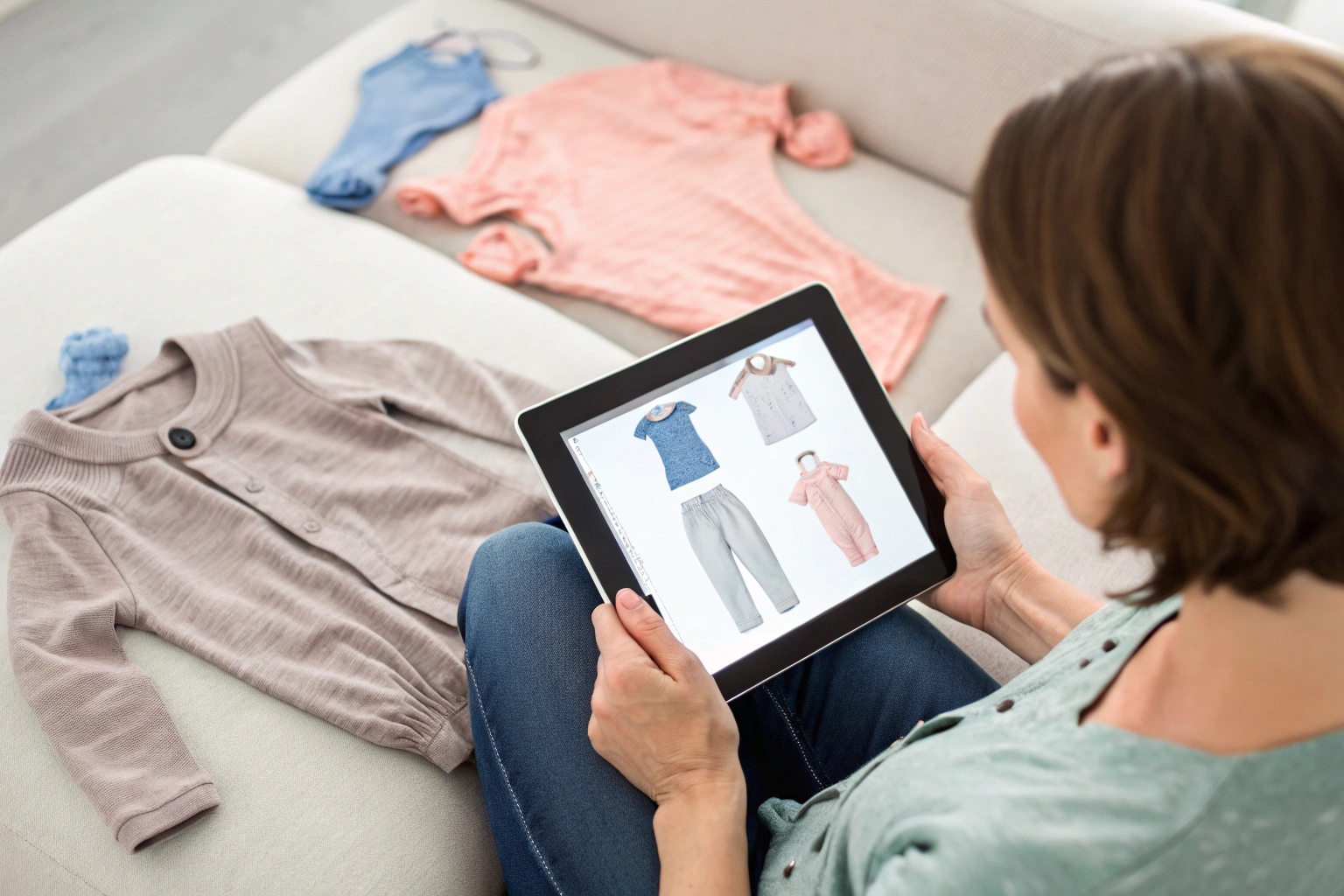Parents love the idea of shopping babywear online—no lines, more variety, cute designs. But when those tiny outfits arrive, they often disappoint.
Online babywear shopping often fails due to inaccurate sizing, misleading photos, missing product info, and a lack of fitting tools that help parents choose confidently.
Let’s explore why digital babywear buying feels broken—and how smarter tools, better content, and clearer sizing can rebuild parent trust.
Why Parents Struggle with Babywear Size Accuracy Online?
One of the most common complaints I hear from babywear buyers? “It didn’t fit.” Sizing mistakes are frustrating—and expensive for both parents and sellers.
Parents struggle with online sizing because baby size charts are inconsistent, rarely include body measurements, and don’t reflect real-world baby proportions.
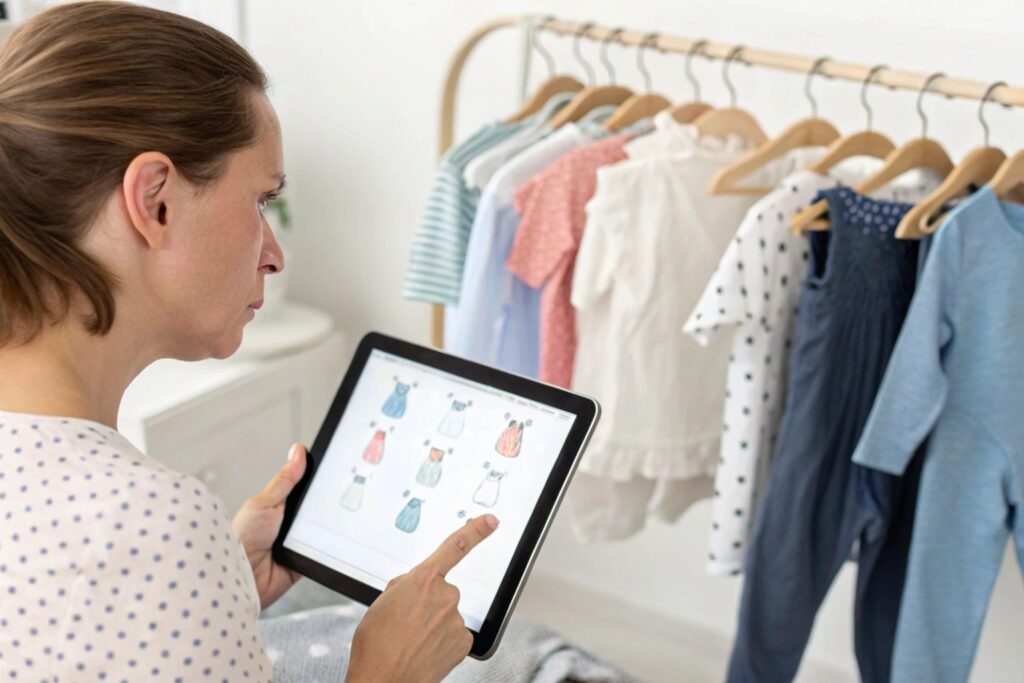
Why is online babywear sizing harder than adult sizing?
Babies don’t stand still for measuring. Every baby grows differently. Most online size charts use vague terms like “0–3M” without listing weight or height. Even worse, some brands copy generic size guides without adjusting for their actual cut and fit. A “3–6M” in one brand may be tighter than a “0–3M” in another.
Here’s a typical issue I’ve seen:
| Label on Product | Expected Weight | Real Fit Based On Parent Reviews |
|---|---|---|
| 0–3 Months | 8–12 lbs | Fits newborns only |
| 3–6 Months | 12–17 lbs | Fits closer to 2–4M |
| 6–9 Months | 17–21 lbs | Runs small, tight sleeves |
How can online stores reduce this confusion?
List real body measurements in both cm and inches. Add “fit tips” like:
“Fits babies up to 62 cm tall and 6 kg. If your baby is close to the upper limit, size up.”
I also suggest adding baby model stats:
“Baby model: 4 months old, 6.8 kg, wearing size 66.”
These details help parents visualize the fit better than generic labels.
How Product Photos Mislead Baby Clothing Shoppers?
Photos sell products. But when it comes to babywear, they also mislead. Many online buyers click “add to cart” based on cute images—then get something completely different.
Babywear photos often use staged lighting, altered proportions, and misleading props that hide fabric quality, sizing, and garment structure.
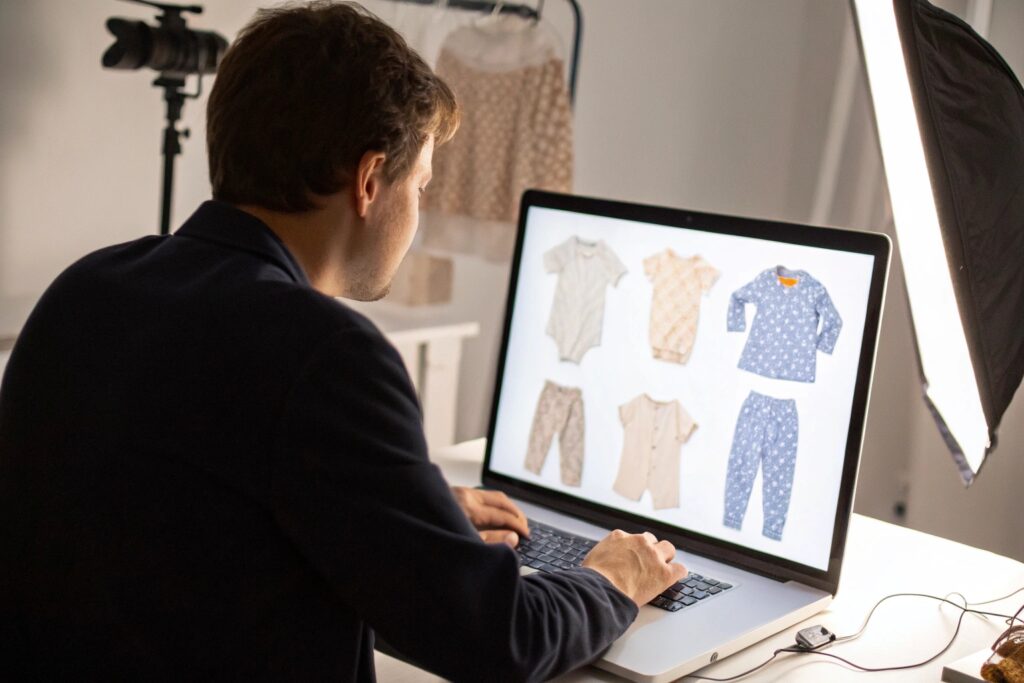
What’s wrong with most babywear product photography?
Some photos show clothes on dolls, not real babies. Others use filters or heavy retouching that change the fabric’s texture or color. Sleeves are pinned back. Loose fits are clipped to look slim. As a buyer, I’ve ordered garments that looked buttery soft—only to receive stiff poly-blends with scratchy seams.
Common misrepresentations:
- Fabric texture: Looks soft online, feels rough in real life
- Fit distortion: Sleeves or legs tucked or edited
- Color shift: Pastels look brighter due to lighting
What can brands do to build visual trust?
- Use real baby models of different sizes and body types
- Show close-up photos of fabrics, seams, and fasteners
- Include flat-lay images with measuring grids
- Avoid excessive retouching—parents want honesty, not polish
One trick I use: add a short, natural-light video clip of the product in-hand. It shows color, stretch, and drape better than photos ever could.
What’s Missing from Most Online Babywear Stores?
Even when a site has dozens of SKUs, clean design, and great photos, it can still feel unhelpful. Why? Because the buying experience isn’t built for parents.
Most babywear stores miss critical info like fit guidance, fabric feel descriptions, live chat support, and easy sizing help.
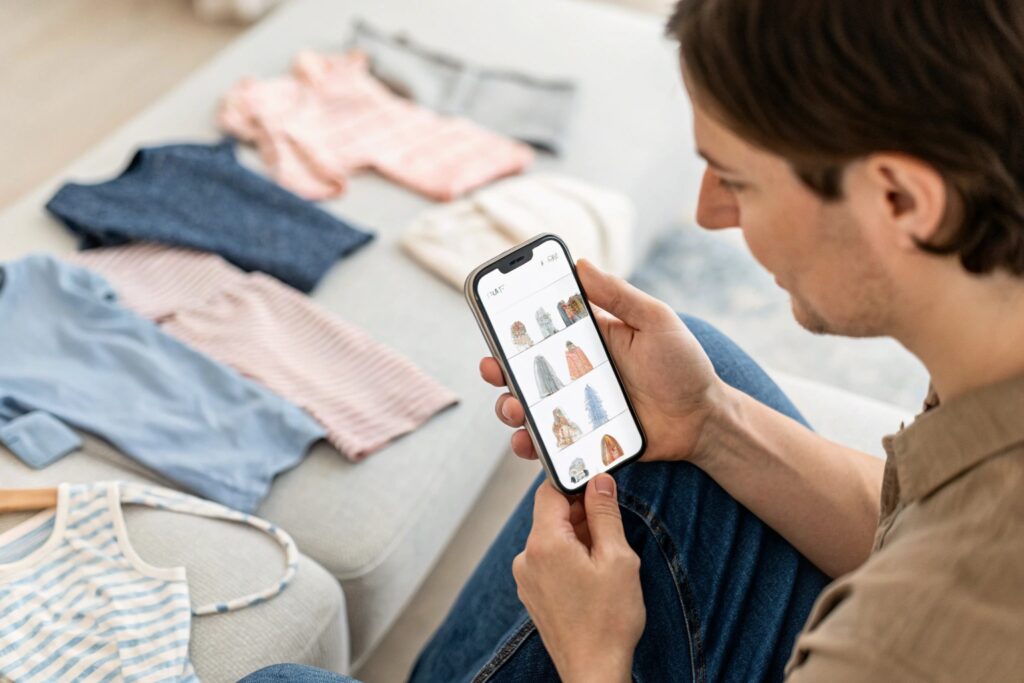
What do most babywear e-commerce sites get wrong?
Here’s what I’ve noticed across hundreds of babywear listings:
- No explanation of fabric quality (soft? stretchy? rigid?)
- No garment weight (light for summer? heavy for sleep?)
- No mention of diaper fit (generous gusset? elastic waist?)
- No answer to: “Will this last more than 3 washes?”
Parents want ease and trust. If they can’t find the answers, they’ll abandon the cart—or go back to Amazon.
How can stores fix this?
Add a “Parent FAQ” box under each product. For example:
Q: Is this stretchy enough for chunky thighs?
A: Yes—95% cotton, 5% spandex blend with elastic leg openings.
Offer a live chat, virtual size quiz, or simple chart filters like:
- “Outfits for cloth diaper babies”
- “Sleepsuits with mitten cuffs”
- “Grows with baby (0–6M stretch fits)”
These small tweaks reduce confusion and boost conversion.
Can Virtual Fitting Tools Improve the Buying Experience?
In adult fashion, 3D fitting rooms and virtual try-ons are becoming common. But can these tools work for babies—who grow every week?
Yes, virtual fit tools can help—especially if they’re built around baby body data, parent feedback, and real product specs.
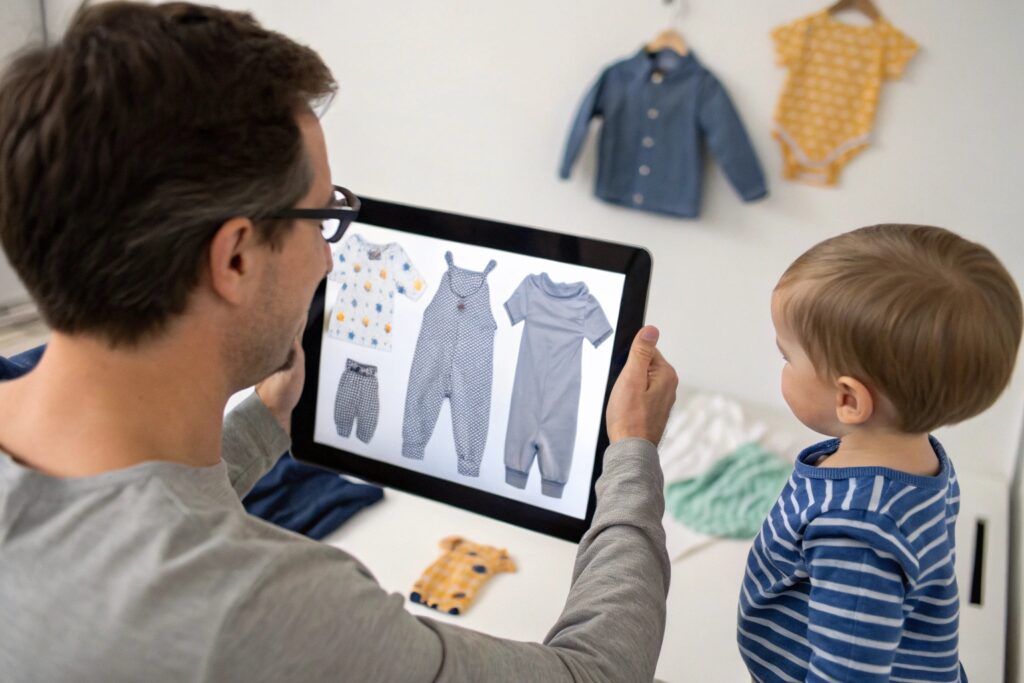
What kind of virtual tools are realistic for babywear shopping?
Parents don’t need high-tech avatars—they need simple guidance. I’ve tested size recommendation tools where you input:
- Baby’s weight and height
- Age in months
- Diaper type (cloth/disposable)
And the tool returns a recommended size per product. Some tools even let you build a profile so future suggestions are faster. The key is matching real baby data with real garment measurements, not generic age charts.
Are any brands doing this well?
Some forward-thinking babywear startups now use AI size tools or fit quizzes. Others link to parent review data:
“87% of parents say this romper fits true to size.”
Even a basic feature like “size up if your baby is above 7 kg” goes a long way.
I believe the future is predictive sizing: combining birth stats, growth charts, and past purchases to guide the next buy. That’s what I’d build into any online store today.
Conclusion
Online babywear shopping isn’t broken—but it’s incomplete. Clear sizing, honest photos, detailed fit help, and smart tech can turn guesswork into confidence—for every parent, every purchase.

